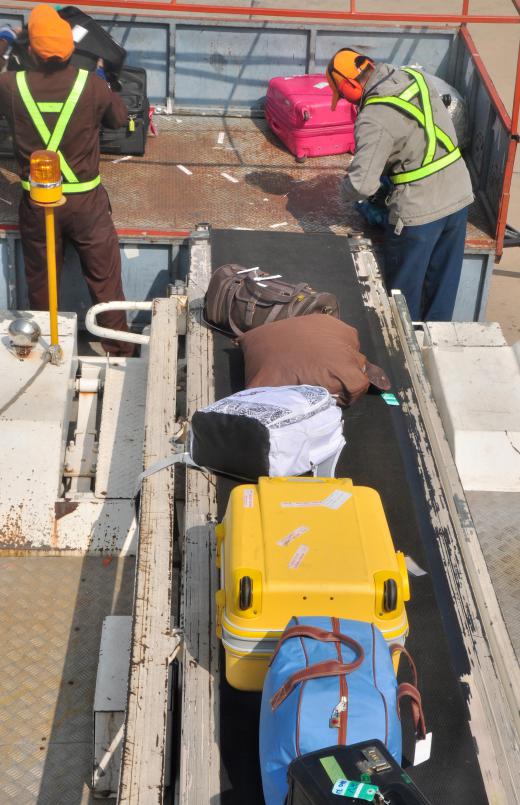There are two main types of conveyor systems found in airports, one of which is used to move people and the other to transport luggage. An airport conveyor that is used to move people is similar to a horizontal escalator, though they can operate on slight inclines. These conveyors are typically installed in large airports to make it easier for people to move between connecting flights or to and from the terminals. Most airports also use extensive conveyor systems to transport baggage, and in some cases luggage has little or no human contact after it is checked in by a gate agent or removed from a plane by a ground crew. This type of airport conveyor can utilize belt systems, interleaved metal plates and even free-wheeling rollers to transport luggage and cargo.
One of the two types of airport conveyor systems is commonly used to help people move around more quickly. These conveyors have been referred to as horizontal escalators, moving walkways and other similar names. They are typically used over medium to long distances, move in straight lines and sometimes have breaks where it is possible to get on or off. Between these breaks, moving walkways usually have railings as a safety precaution.

Airport conveyor systems intended for human use are typically designed to move in only one direction, so they are often paired. In other cases, there will be one conveyor moving in each direction and a third that is capable of reversing direction to account for excessive foot traffic. It is also sometimes possible to intentionally stop a moving walkway, at which point it simply provides extra space for people to walk normally in one direction or another.

The other main type of airport conveyor system is used to transport luggage and cargo around an airport. These conveyors are almost always found at check-in and baggage claim areas, though each airport uses its own configuration. In some cases, the mechanical conveyor system simply delivers luggage and cargo to motorized vehicles which are then used to move the items around the airport. Other airports have significantly more complex conveyor systems, and in some cases baggage will travel throughout an entire facility without any human intervention.

Baggage conveyor systems can use a variety of different belt types, including rubber sheets and metal plates. These conveyors typically have a horizontal orientation, though it is also possible for them to account for changes in elevation. Baggage conveyors can also utilize a number of different methods to connect one path to another, including 90° and 45° junctions. Another way of joining two airport conveyors together is the power curve, which is a type of curved belt system that can accommodate 15° to 20° changes in orientation.
